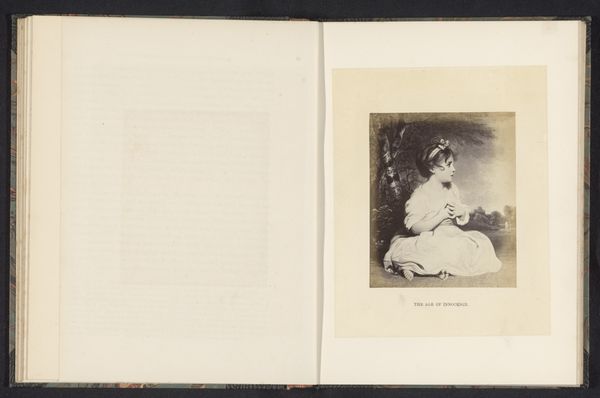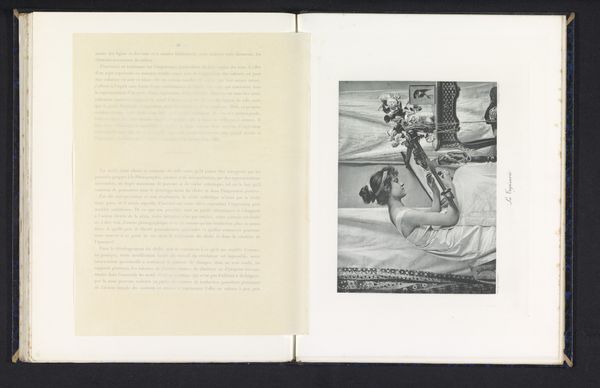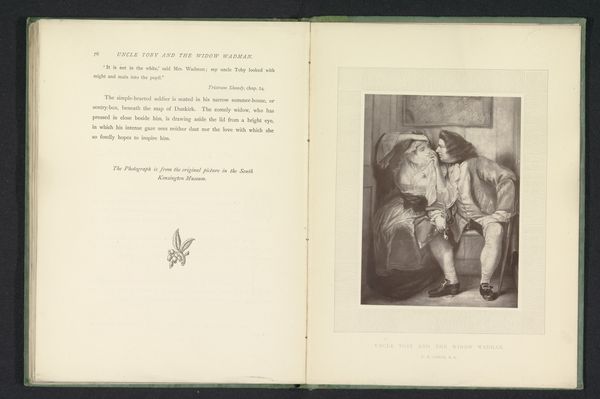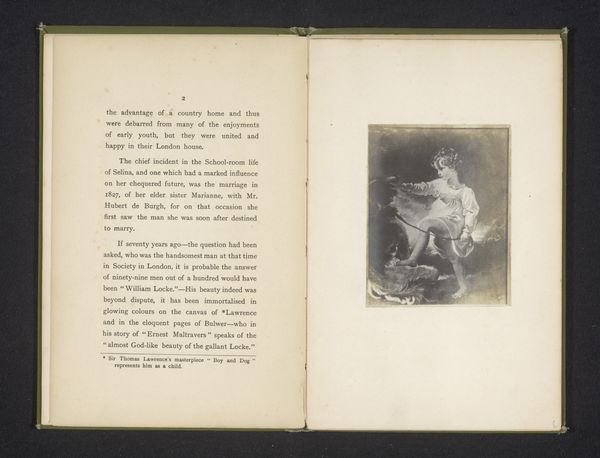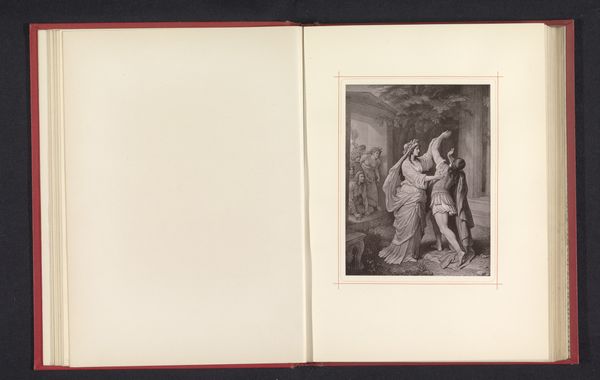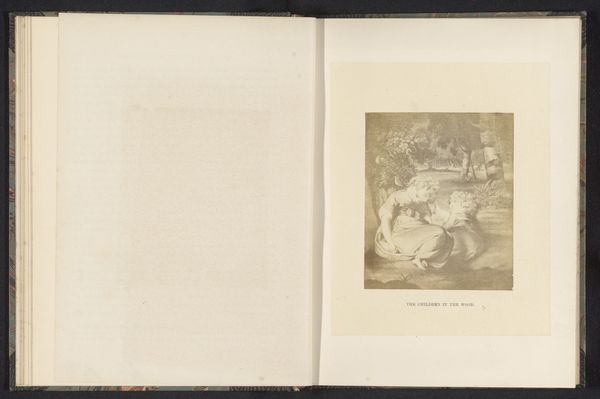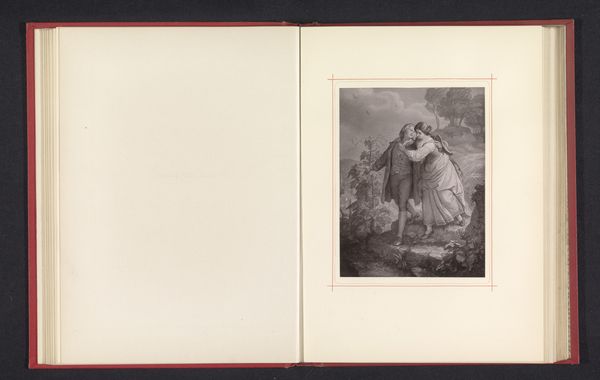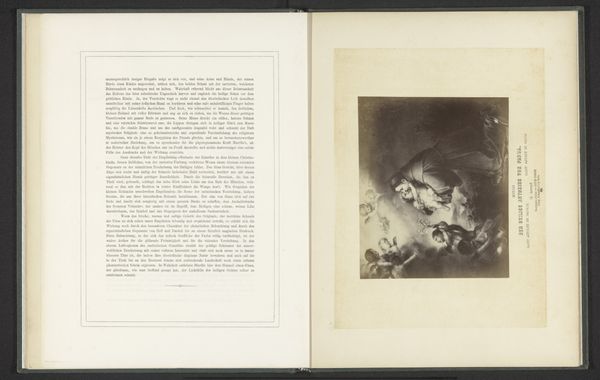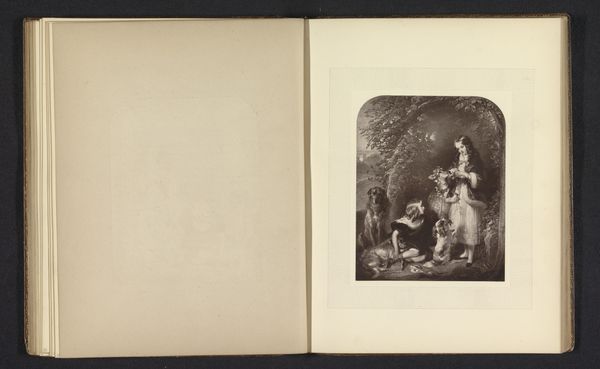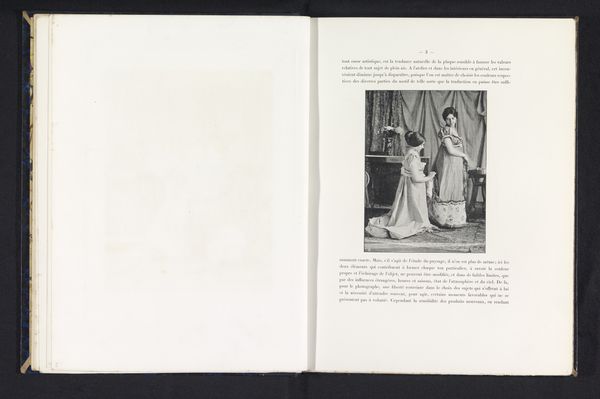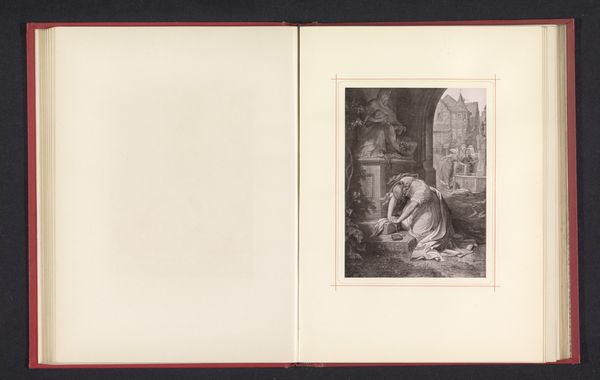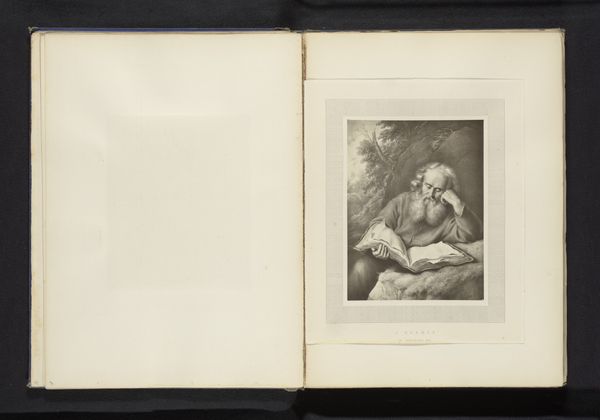
Dimensions: height 202 mm, width 150 mm
Copyright: Rijks Museum: Open Domain
Curator: This sepia-toned photograph, entitled "Twee vrouwen bekijken een hoed in een interieur"—"Two Women Examining a Hat in an Interior"—is attributed to Constant Puyo and dates from before 1896. It's an example of pictorialist photography with clear impressionistic influences. Editor: It strikes me as almost painterly, the soft focus and subdued light create such an intimate, dreamy atmosphere. The textures look fantastic, from the frills on the hat to the folds in the fabric. Curator: Absolutely. Puyo and other pictorialists used techniques like soft focus and alternative printing processes to mimic the effects of painting and elevate photography to the status of fine art. Considering this ambition, what strikes you about the arrangement and composition of objects within the room? Editor: I note how much of the composition hinges upon what appears to be a finished hat resting casually to the left of the main action. Perhaps suggesting how fashion is more "caught" or carelessly thought out, than it seems in public? This domestic scene—which itself is carefully constructed—reminds the viewer how images of women have traditionally served in these "genre paintings." Curator: Yes, and it’s important to remember the social context here. The rise of photography coincided with a growing consumer culture. These elaborate hats, for instance, reflect the wealth and leisure of the upper classes. The photograph, then, can be seen as both a celebration of and a commentary on bourgeois life, showing a very specific form of material production and consumption. This kind of scene would, to some degree, be inaccessible to a vast majority. Editor: Agreed, and visually, I can't help but notice the mirrored poses of the two women, echoed again in the curves and shapes of the decorative plates behind them. This intricate patterning, further explored throughout their elaborate dresses, brings an intense level of balance to the composition. Curator: That’s an excellent point. By drawing our attention to these structural and repetitive elements, we realize the complex orchestration of these supposedly candid glimpses into turn-of-the-century domesticity. Editor: Ultimately, this photograph encapsulates a moment of quiet observation and reminds us of the subtle ways artistic intention operates through both materials and compositional arrangement. Curator: A fine conclusion. Puyo’s piece stands as an evocative image, not only displaying beauty, but prompting us to investigate how the production and aesthetic perception of that beauty might reveal even larger aspects of social and cultural circumstances.
Comments
No comments
Be the first to comment and join the conversation on the ultimate creative platform.


